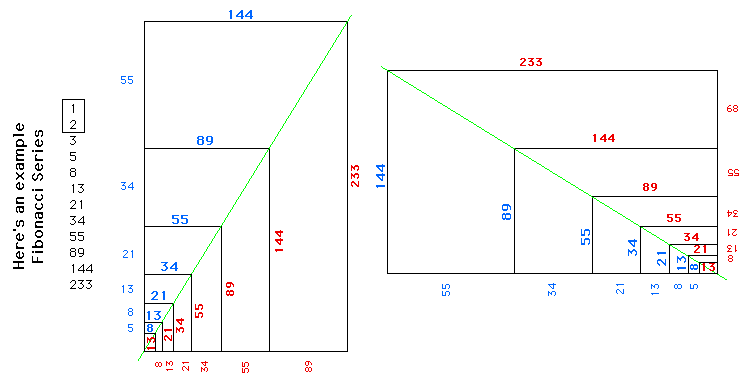1, 2, 3, 5?! Ain't it suppose to be 1, 2, 3, 4 and then 5? Well, yes, IF you're counting - in Base10, incrementing by one. You could count by even numbers (actually by inteer even numbers) 2, 4, 6, 8 ... or by odd numbers (actually integer odd numbers) 1, 3, 5, 7 ... These are just some of the numeric series of numbers we can use. There are many others, a very interesting one being one of the Fibonacci (Fib-Oh-Notchy) Series You start with a pair of seed numbers, add the two together to get the next number then add that number to the previous value and so on. If you start with 1 & 2 the series is 1, 2, 3, 5, 8, 13 ..... Or, you could start with 1 & 3 and get the series 1, 3, 4, 7, 11, 18 ...
So what does this have to do with furniture and furniture proportions? Well let's look at a Fibonacci series in terms of some rectangles and their ratios of the height to the width. Interestingly, the ratio of the two sides starts approaching The Golden Ratio of 1.618 as you get up into the series.

You can also apply a Fibonacci series to graduated drawers as well. That's covered in the Graduated Drawers section of the Design area of this site
If you want to look for Fibonacci Series proportions in photos of furniture just draw the X & Y axis and the Green Line shown above onto tracing paper or clear plastic. Line the X&Y axis up to horisontal and vertical edges of the piece and see where the Green Line intersects faces of the piece.
Interesting huh? Starting to think about ways to apply FIBONACCI?